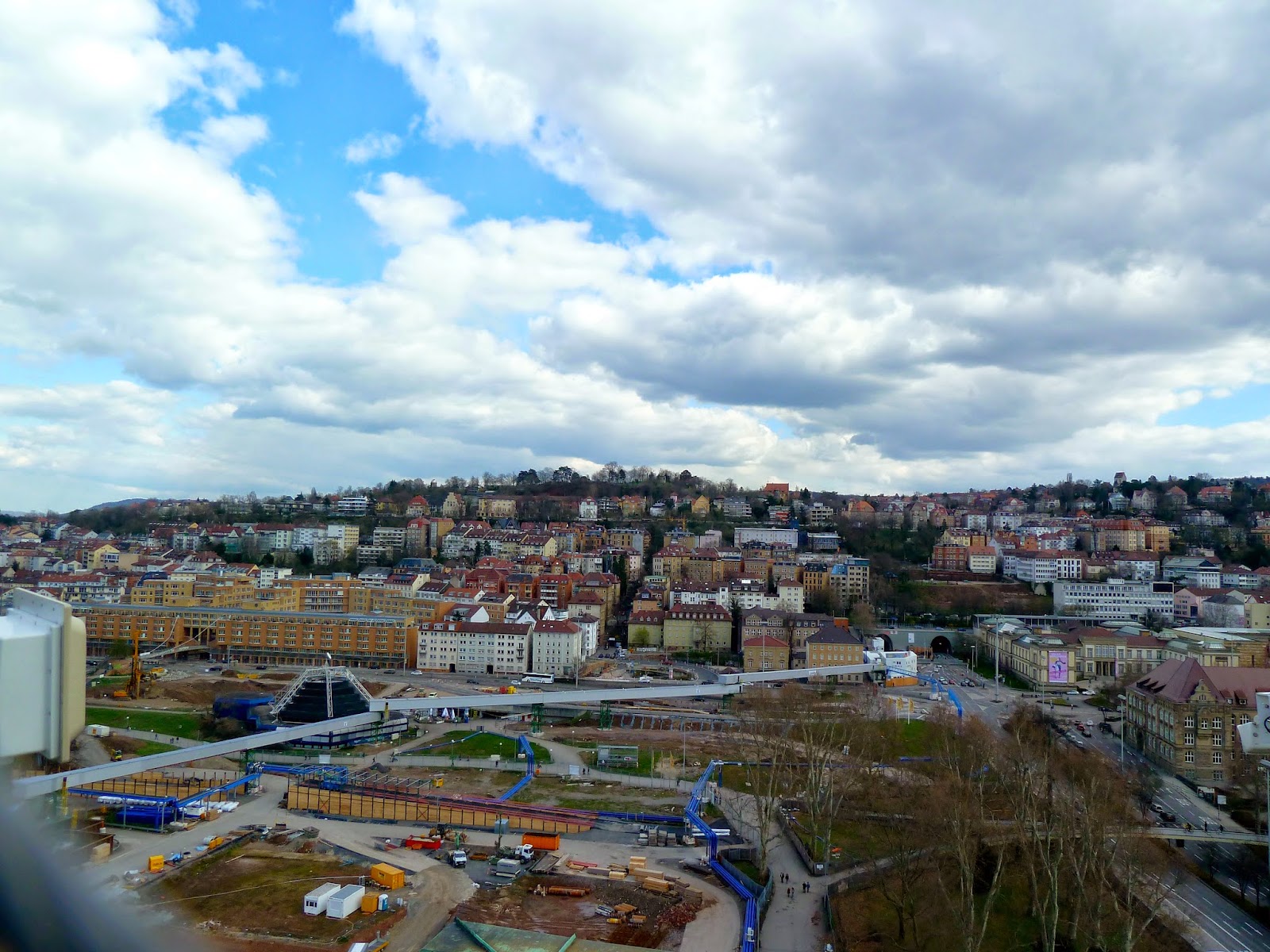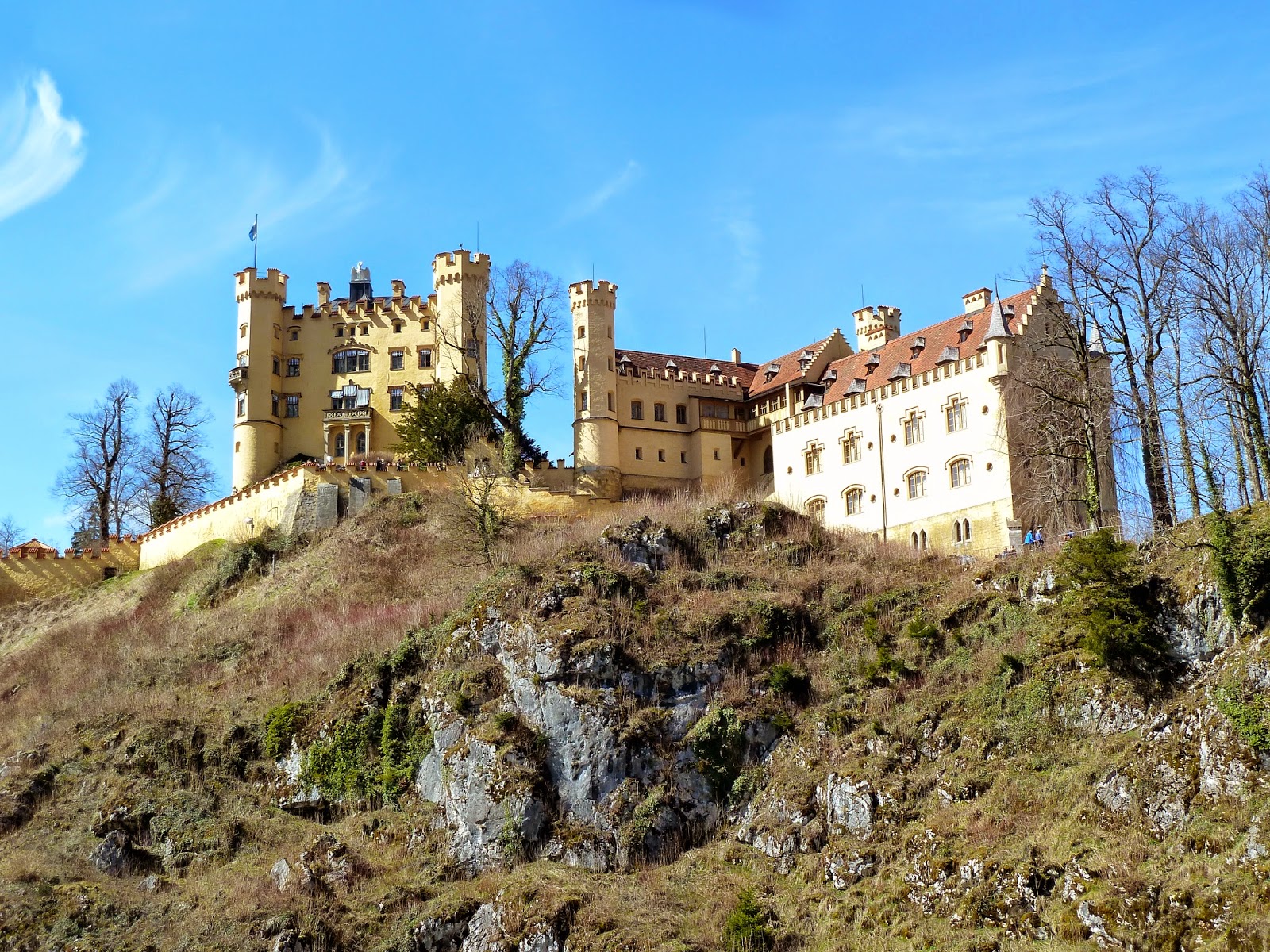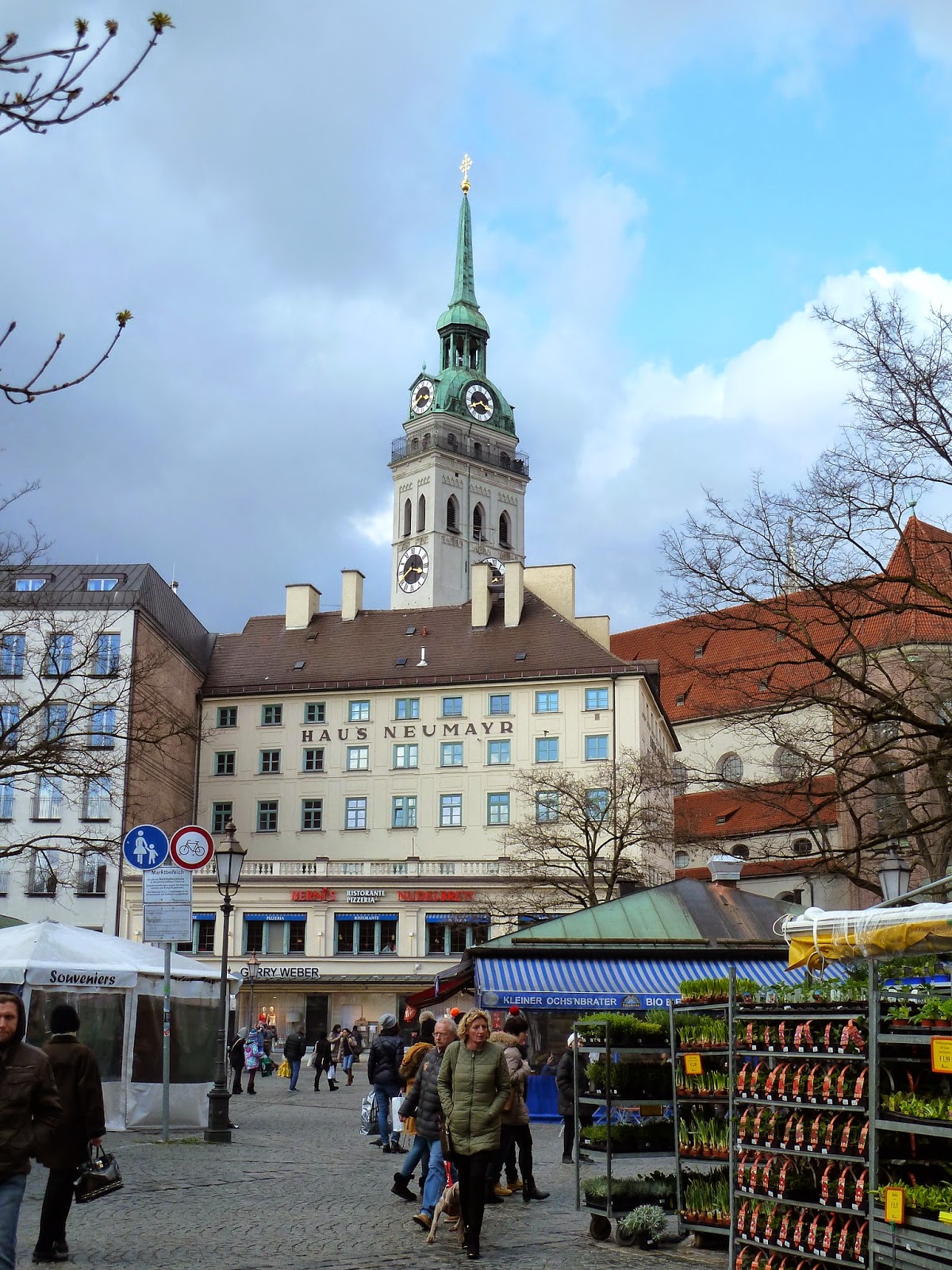Snow turned into rain and the mountainous terrain gave way
to rolling hills. Pine trees became vineyards and the signs of industry began
popping up as the train trundled into Stuttgart.
Of all of the places I was planning on stopping, I had the
least idea of what Stuttgart would be like. But this more industrial town had
several treasures.
I spent plenty of time walking around and exploring the
city. It had a bustling atmosphere, with a huge shopping district in the center
of town. There was also a nice historic area. Most of my time in Stuttgart,
however, was spent visiting some of the many museums. As a museum-lover, these
were topnotch.
Saturday afternoon I visited the Staatsgalerie. I had heard it was free on Saturdays, and that had
just wet my appetite for an art museum. Turns out they have ended the free
Saturday program, but admission was only five Euros. And it is still free every
Wednesday. Five Euros turned out to be a bargain for such a high quality and
extensive art collection.
I didn’t know until I got there that Stuttgart was home to
such an art hub. The museum collection spanned from 1350 to today, and featured
works by just about every famous artist you could imagine. The earliest works
focused on German painters, particularly Early Swabian panel painting. You are
probably thinking, that sounds nice but
what is it? I felt that way many times as I would enter rooms of the
Staatsgalerie. But after reading the large wall
explanations, seeing the art helped to clarify some. I felt that this approach,
using one block of text to explain a whole room, was helpful. In this way I
could gather the main ideas about movements and periods to expand my art
knowledge.
I couldn’t take pictures in the museum, but luckily art is
often in the public domain, so I can include a few of my favorite pieces.
|
Swabian panel painting was a form of decorative altar
painting from that region of Germany.
Meister von Meßkirch [Public domain], via Wikimedia Commons
Did I mention how many famous artists there were? I saw
original Rembrandt, Monet, Picasso, and Dali paintings, just to name a few. I
was very impressed at the breadth of the collection. In the end, I wanted to
stay exploring even longer than the two hours or so that I did.
Rembrandt St. Paul in
Prison [Public domain], via Wikimedia Commons
The next day I spent my morning at another massive museum. Stuttgart
is the headquarters for both Mercedes Benz and Porsche. It’s like Germany’s
motor city. Both manufactures have museums, but I chose to visit the MercedesBenz museum.
Housed in a giant building on their industrial park, you can
tell before you even go inside that this isn’t a small museum. And how could it
be when it covers the entire history of automobiles and their functions? When
you enter you are given an audio guide that can scan exhibits to give you more
information about them. Then an elevator whisks you to the top floor where you
see the first engines. Developed separately by Gottlieb Daimler and Carl Benz
in 1886.
You then spiral downwards through time. First, the Mercedes
brand is established. Then you watch as luxurious, open top touring cars
develop into the sporty, safe, efficient cars we drive today. Parallel to this
timeline of automobile and brand history are collections. Each
one highlights a specific type of vehicle, from transportation working trucks. They
also had a section of Mercedes Benz cars that had been owned by celebrities,
including a custom Popemobile.
The Popemobile
I am not a “car person,” but I had a good time looking
through the museum. And I certainly learned a lot more about how cars work.
Seeing the cool, old cars was a treat as well. The several hours I spent in the
museum flew by.
Later that afternoon, as I walked around in the historic
part of Stuttgart, I stumbled upon the musical instruments museum. It was a
free museum, and they didn’t close for another 45 minutes, so I went inside.
Again, visitors were given audio guides. These let you listen to samples of
music featuring the different instruments on display. They had many unfamiliar
instruments from around the world, so I really enjoyed hearing them. All the
text in the museum was in German. But with the help of the audio guide, I felt
that I could figure it out. For a
little, free museum, it was very pleasant.
A home pipe organ
A glassharmonica
Of all the places I visited on my trip, I spent the more
time in museums in Stuttgart than anywhere else. There was a good mix of art,
technology, and culture. Set in a place so humming with energy, they were a
nice place to escape from the crowds for a bit. If you are ever in Stuttgart, I
encourage you to try out some of their five-star museums.
|

















































































